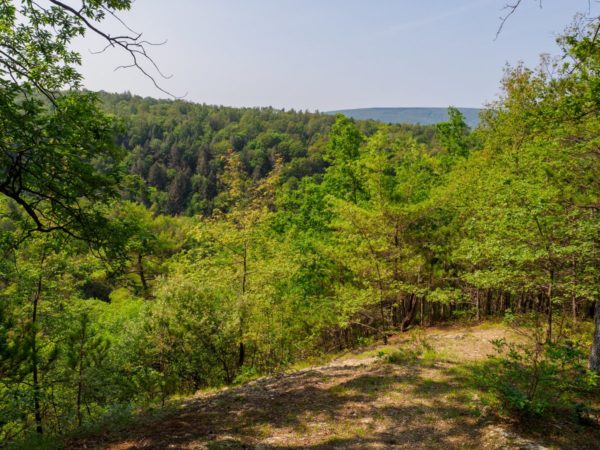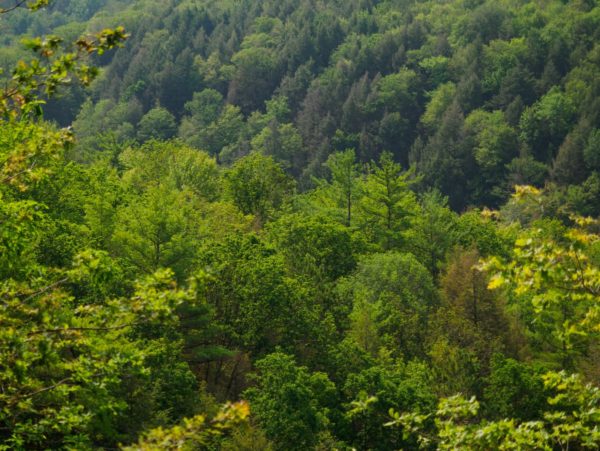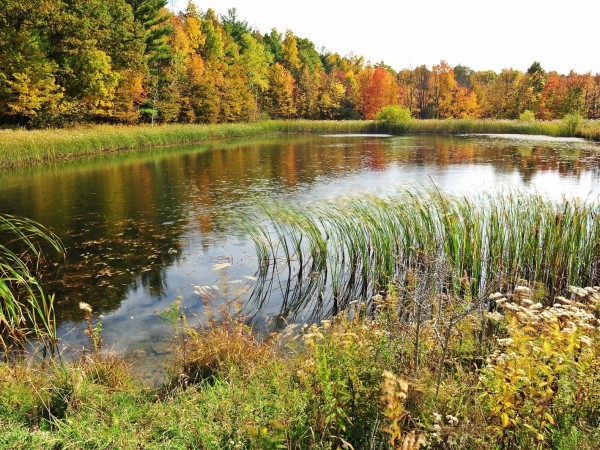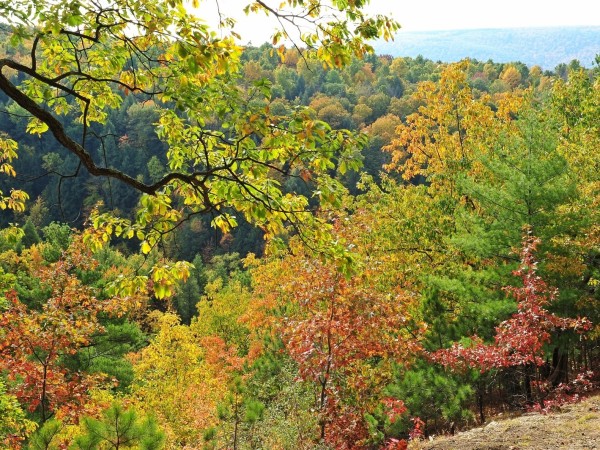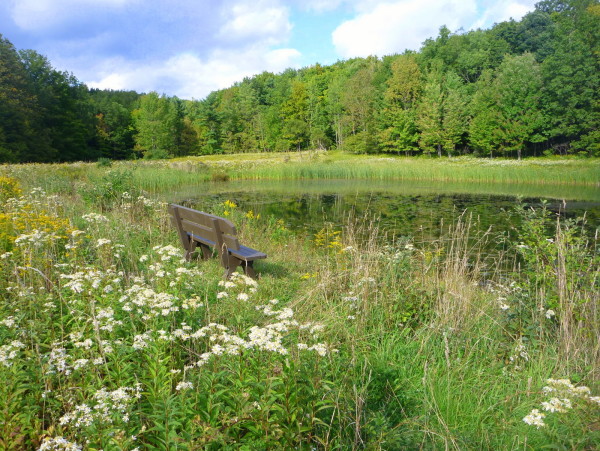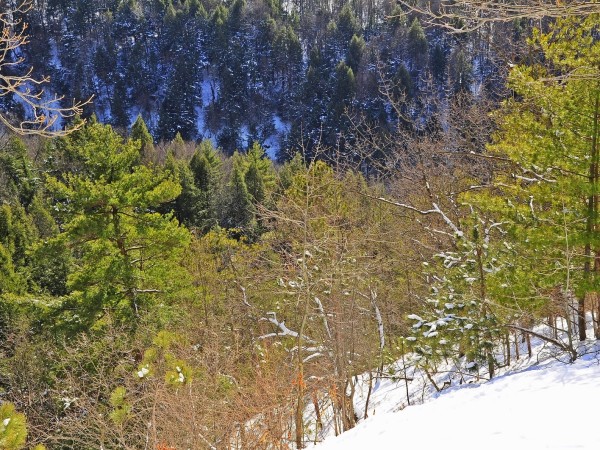Over 100 years ago, after the sawmills of the Bristol Hills fell silent, white pine, hemlock, and oak seedlings sprouted along the northern rim of Briggs Gully, one of the region’s largest gorges.
The young trees were tall and strong in 1926 when three artists — John C. Wenrich, James Havens, and Colburn Dugan — bought a 90-acre piece of paradise as a place for peace, quiet, and contemplation. Today hemlocks rise from shady depths of the gullies, white pines and red pines soar above the younger maples, and majestic oaks spread their wide branches over quiet groves.
In addition to the immense Briggs Gully, some of which forms the southern boundary, several other gullies wind through the preserve. Diverse stands of mature forest (including about 10 acres of old-growth), a wide array of wildflowers, and sweeping views of the hills surrounding Honeoye Lake’s southern end make this site truly special.
The preserve provides excellent examples of the area’s geologic history and ecological systems. Water tumbling down to the glacially carved Honeoye Lake cut the deep gullies of the preserve. Areas more recently abandoned by farmers give the preserve a small field and a woodlot of young trees which provide additional habitats. Here, you’ll hear Yellow-Throats, Bluebirds, and Song Sparrows, and may see a deer, fox, or woodchuck.
The quiet of the preserve is interrupted only by the sounds of rushing water and songs of Black-throated Green Warblers, thrushes, chipmunks, and other forest denizens. Be sure to take in the view from one of the rock outcroppings along the gully’s north rim. On the far side of the Honeoye Valley, beyond the broad expanse of Briggs Gully, you’ll see the Harriet Hollister State Recreation Area.







